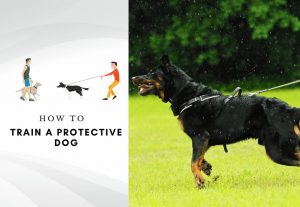Misbehaving dogs can be a real pain. If you own one, then it is pretty evident that you’ll be scratching the backing of your head thinking about ‘How to train a disobedient dog?‘.
Well, this article is just about that.
We struggled with our border collie; he would get on top of the sofas and start ripping them off. We tried luring him away with his favorite snacks, but that only made it worse, and he started doing that more often.
He wouldn’t bother listening to any command, despite training him a lot.
We were able to overcome this, and now our 4-year-old Buddy is a good boy. He understands all the commands and would stop doing anything at a moment’s notice when we command “Stop Buddy!”.
Sometimes dogs don’t understand their owners pretty well, and a major chunk of the blame goes to the owner as well.
You have to invest time and effort to nourish the bond between you and your dog.
How to Train a Disobedient Dog: Preview
- How Disobedience in Dogs Begins?
- 4 Reasons Why Your Dog is Disobedient
- How To Train a Disobedient Dog: Step by Step
- 4 Common Disobedience Behavior Problems (And Solutions!)
- Wrong Ways to Discipline a Dog
- FAQs
- Conclusion
Keep reading further to understand your dog’s behavior, why he disobeys you, and what you can do to mitigate it.
How Disobedience in Dogs Begins?

Dogs are pretty much like human children. They treat you as their pack leader.
Just like human babies, they mirror everything you do and absorb it into their personalities.
Getting to the root cause of how exactly disobedience begins in dogs can be quite tricky since each dog is different, and in the same way, each dog owner’s way of treating their dog varies.
The majority of the time, it is the owner’s fault for letting the dog get disobedient in the first place.
It often goes unnoticed initially; usually, the dog will start to ignore simple commands like sit and stay.
The occasional disobedience might look cute for short videos; however, once they grow up and behavior isn’t rectified, they can become a nuisance.
The cutesy furry Buddy becomes a nightmare to handle.
You might think, well then, how to train a disobedient dog?
Well, dogs don’t love freedom, you might be thinking what a cruel statement that is, but there’s a strong reason for that.
Your dog doesn’t understand whether it is right to bark at you, chew your shoes or play with your cushions.
Once a dog grows up, it can get quite hard to train them effectively since they are way past their learning stage.
Little puppies are full of energy, one way or another; they’ll find a way to exert their energy.
While puppies are still in the learning phase, it is your duty as the owner to make the best out of this phase.
They are pack-oriented. They know their survival depends on the cues provided by the pack leader.
If they sense that the pack leader is weak, they resort to rebellion and choose a new one.
They long for the rules, and if there are no rules set for them, they’re bound to make you go haywire with their behavior.
4 Reasons Why Your Dog Is Disobedient
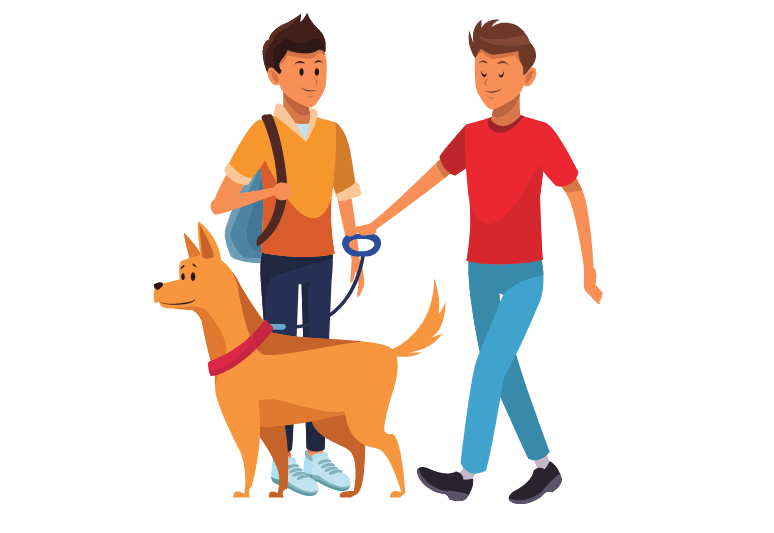
Disobedience can begin at any stage, although the reason for it varies from one dog to another. Major reasons why your dog might be disobeying you are the following:
#1 Inadequate Training:
Everyone wants the cutest puppy, but the sad truth is no one wants to invest time in training one.
Over time improper training would lead to many issues regarding dog behavior, one of them being disobedience.
Firstly, you have to understand a dog’s brain, how it works, and how you can remodel its behavior.
Starting signs of disobedience might go unnoticed. They’re usually ignored under the umbrella of puppy play; however, once they become apparent, they can be pretty hectic to deal with.
#2 Negatively Feeding The Reward System:
Dogs love rewards, and one of the major mistakes owners make when their pet shows disobedience is to reward him, which can be detrimental to the dog’s behavior.
Next time your dog throws a tantrum, please keep a hold on that snack; the dog can wait, and so can you.
Make sure the dog understands that you’re trying to teach him, don’t give him treats just as a mere distraction, which will condition the dog negatively.
#3 Physical Punishment:
There are healthy ways to punish your dog; however, none of them involves physically striking your dog. Hitting your dog under any circumstances is not only cruel but extremely tarnishing to their self-esteem.
More than often, dogs have pent-up aggression that they might release if their owner starts hitting them, which can be dangerous.
It is always advised to use proven techniques to gain control of your dog rather than physically hitting him.
#4 Weak Leadership:
From the dog’s perspective, you’re the leader. He wants to follow your lead and obey you. On the other end, if you show weak leadership signs, your dog won’t respect you no matter what happens.
It doesn’t matter what breed you have, whether it is small or big, the moment he senses weakness in your stature, he’ll start disobeying you.
People often think handling a smaller dog would be easier; however, it turns out to be a nightmare most of the time for them since all dogs are instinctively wired to follow a strong leader.
Training a Disobedient Dog in 4 Easy Steps
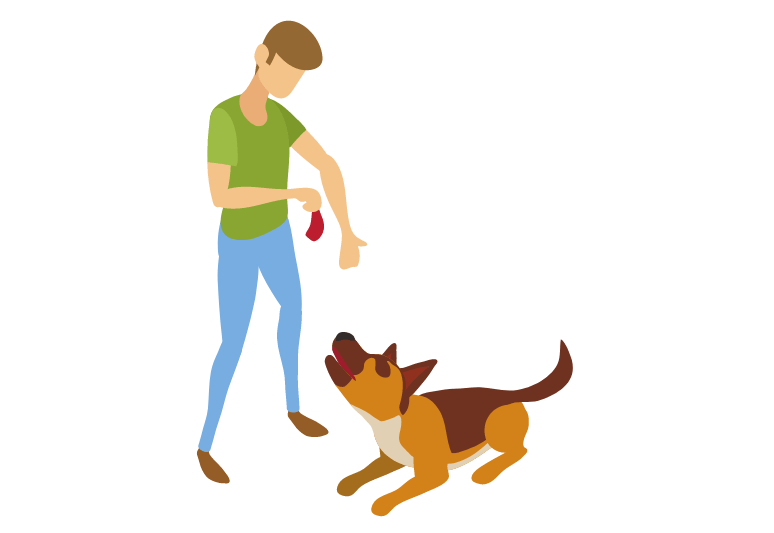
#1 Start Training Early:
Don’t wait for your dog to get to a specific age to start training. The further you delay the training process, the more chances your dog will be disobedient in the future.
You can start with simple commands like sit and stay, then proceed to teach complex commands.
The early training process makes the dog understand their human owner more effectively and establishes a strong bond.
#2 Positive Reinforcement:
You can use positive reinforcement to remodel your dog’s behavior. Remember, this can take a long time and a lot of failures.
You can start the reinforcement at your home and then carry it to areas where the behavioral problems usually arise; for example, it can be the dog park or walking lane.
The course mentioned in the next section goes into detail about positive reinforcement and has a handful of workarounds for it.
#3 Work on The Bonding:
The stronger the bond, the more your canine Buddy, will be inclined towards you. But how does one improve the bonding?
Well, you and your dog have to engage in more activities together. Take your dog on longer walks, play fetching games with him. Maybe even try obedience exercises like sit and stand.
Reward them regularly, and the bond between you two will bear fruit.
#4 Socialising:
Take your dog to the dog park more often, and get him used to the presence of other dogs and human beings.
As time passes, your dog will grow fond of having company and will even play with other dogs in the park. Socializing will also make your dog more confident and minimize stress levels.
Want a goal-directed, problem-solving approach to train your disobedient dog?
Brain training for dogs is a complete dog training course that will cover everything you need to know to train your dog successfully.
It is based on scientific knowledge of how dogs learn and is backed up by extensive research and practical experience.
Dogs learn to cooperate with us and to be obedient, without punishment! The dog training techniques in these books are proven to be gentle and force-free.
Plus, Brain Training for Dogs has a 60 money-back guarantee.
You signed up for the training and saw no improvement in your dog’s behavior? Easy, Claim a refund within 60 days (no-questions-asked policy.)
5 Common Dog Disobedience Behavior Problems (And Solutions!)
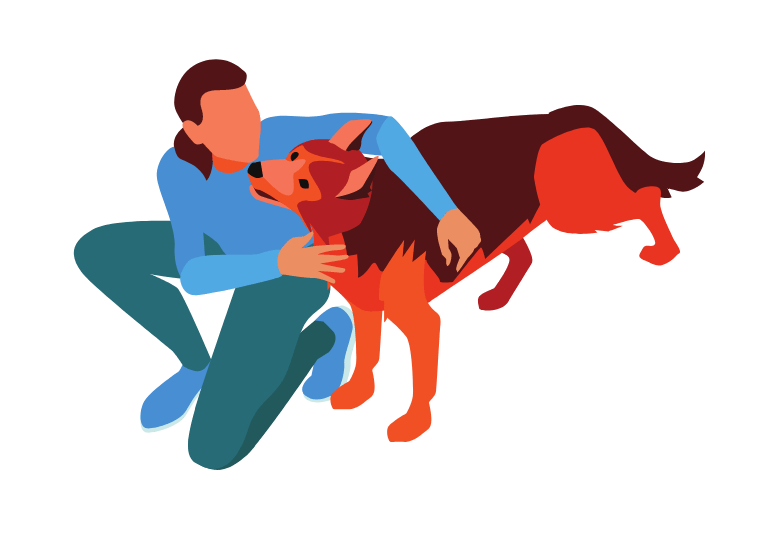
#1 Lunging on Dogs and People:
If your dog behaves well at home but does the opposite in public, you can slowly give him more public exposure and keep the leash short to not lunge on anyone and cause any harm.
This can be scary for some folks, as nobody wants a dog lunging at them. This behavior immediately ruins the walk for you as well.
You cannot eliminate this behavior, although you can improve it by slowly introducing your dog to other dogs.
Keep treats along with you to distract the dog in case the situation gets rough.
You can also make your dog wear a harness and a head-halter to ensure the safety of other people.
#2 Barking:
Yes, a barking puppy looks cute, but it becomes a nuisance if that same barking habit is carried over to adulthood.
Your dog barks because he wants to protect you; he doesn’t see you capable of defending yourself; therefore, he barks to wade away the potential threat.
Some dogs bark so much as if it is their sole purpose of existing. You can train your dog to bark at your command, but what if he disobeys you and ignores your commands?
You have to understand that they’re doing it for attention; once you devoid them of any attention, they’ll stop barking. Avoid any treats to distract them as they can worsen the issue.
If your dog tries to bark or harm anyone in public, try remaining calm and slowly pull the leash without choking the dog. Once the scene isn’t heated anymore, you can bring the dog home and work on the training.
#3 Leash Pulling:
Let’s just say you’re out there in public, minding your own business and walking your dog with you. Suddenly, another dog comes nearby, and your dog goes absolutely mad.
Your dog will pull his leash and give all he has to chase the other dog. It isn’t necessary that your dog might go berserk over another dog; it could be a human being as well, and believe me, it can get quite embarrassing.
At worst, your dog can get reported to the local authorities and quite possibly be taken away from you.
Incomplete training often leads to scenarios like these, where the dog will deliberately disobey you. The best way to counteract this situation will be to provide proper training to the dog.
This is a common example of disobedience. Whenever you feel your dog tries to pull the leash, distract him and start walking in the other direction, it is wise to bring treats with you as well to distract him further.
#4 Breaking Household Things:
Your dog just broke your favorite vase that you bought on your last trip to Europe, and now he’s on his way to ruin your new cushion as well.
And you’re standing there and thinking how do i train my disobedient dog?
Even though you trained him in the past and the training worked well, it no longer seems to work now.
You can try re-training your dog to eliminate this behavior or look for any signs of stress in him. Re-training works well for issues like these.
#5 Confusing Puppy Play:
Puppies only love two things: sleeping and playing. They are packed with turbocharged batteries, which never seem to run out at all.
Since they’ve tons of energy, finding an outlet for it can be quite difficult for them. They will chase zoomies, birds, or do other cutesy stuff to release their pent-up energy.
They look adorable doing all this; however, at times, they might cross the line when they disobey you. Just like us, dogs go through a teenager phase as well. They’ll test the boundaries and often disappoint you.
Once you’ve started training your little puppy, you have to be careful regarding the signs of disobedience, as they often go unnoticed. Don’t let the minor signs of disobedience go out of your sight easily. Catch them at the earliest and work on the training.
Wrong Ways to Discipline a Dog

#1 Shouting at Them:
Dogs take pride in pleasing their owners. It gives them confidence and enlightens their mood.
However, whenever you shout at your dog, you’re inflicting damage on his personality.
Your dog will feel less confident and would potentially avoid you in the future.
Shouting at your dog might be a quick fix for any situation; nevertheless, the long-term tarnishing effects are quite horrible.
#2 Hitting Your Dog:
Physically hitting your dog by spanking or yanking him is cruel and inhumane.
It might appear to work well for the time being, but the dog will never forget it.
There are far better ways to treat your dog’s behavior rather than hitting them. Avoid hitting no matter what the situation is; your dog won’t remain the same after striking.
FAQs:
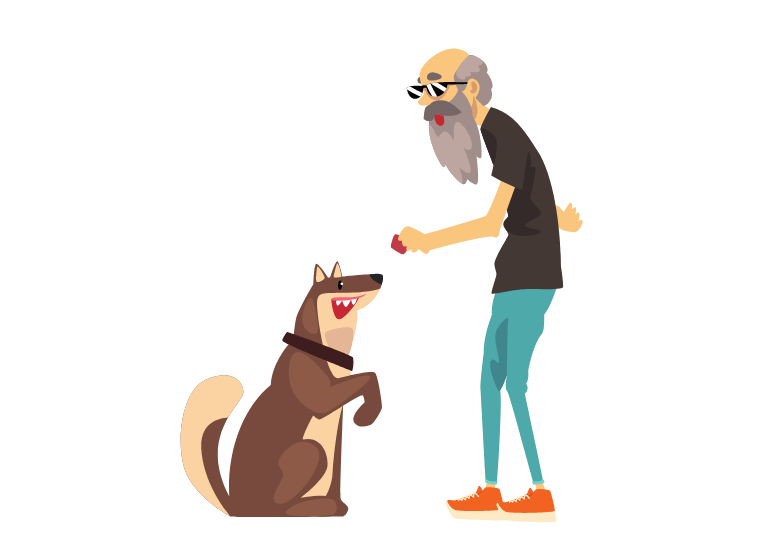
How to Discipline a Dog Without Punishment?
A disobedient dog can make one go highly neurotic. Often, the owner resorts to choking the dog by pulling the leash or throwing something at it.
This can cool off the situation temporarily, but it will forever be tattooed to the dog’s brain.
There are different kinds of punishments when it comes to treating your pet’s behavior. Some of them can be considered humane; however, most of them have negative consequences.
The only possible way to properly handle and train a disobedient dog is through positive reinforcement. This reinforcement technique works well for adult dogs and little puppies alike, although it must be executed carefully.
Positive reinforcement training uses the reward system to change your dog’s behavior. It allows you essentially eliminate the undesirable behavioral traits and boost their morale in the traits you like.
Let’s say you don’t like when your dog jumps up on your bed and tries to spoil the sheets. At first, you’ll have to lure your dog away from the bed with his favorite treat and place it on the floor. Repeat this cycle for a while, and soon your dog will stop ruining your bed.
So always make sure you have a handful of treats with you all the time and don’t resort to hitting your dog in any way.
What to Do When Your Dog Disobeys You?
It largely depends on the scene where the dog disobeys you.
Proper training can make your dog stay calm around other dogs and human beings, and if you want to up the level, you can teach your dog to greet others as well.
Remember, it takes a lot of effort and constant practice to make the training work. Patience is the key here.
How Can I Determine if My Dog Is Acting Like a Puppy or Is It Disobedient?
Once you’ve started the training, your dog will begin to see you as the pack leader. He will try his best to please you and follow your commands. However, during the puppy play stage, it can be quite hard to train.
If you notice your puppy continuously forgetting the training lessons and often rebelling against you, your puppy isn’t playing; he is disobedient.
How Can I Prevent My Puppy From Becoming a Disobedient Dog?
Well, it is nice to let your young dog do puppy play now and then, but once he starts ignoring your commands to stop it, it can get quite hard to handle it.
To prevent your puppy from becoming a disobedient dog, you need to make use of positive reinforcement training.
You have to keep track of positive behaviors that you want to encourage and negative ones that you want to eliminate. Plus, once in a while, your growing dog might experience mood swings due to hormonal changes.
Make sure to keep the stress levels of your dog under control. A stressed dog can potentially act as a disobedient dog.
Finally, if you socialize your puppy from the very start and reward it from time to time, you’ll successfully nullify any chances of it becoming disobedient in the future.
How Should I Regain Control Over My Disobedient Dog?
You have to look for the patterns where the dog disobeys you the most. This could be a public place or at home. Identify what triggers your dog to disobey you.
Once you’ve identified the root cause, you can then work along with your dog to improve the situation. You can use the positive reinforcement technique to encourage him, or you can try training your dog from scratch again.
This course goes in-depth on how to train a disobedient dog. It has complete guidelines that you can begin from scratch and improve your bonding with your dog.
Why Does My Dog Know Commands but Won’t Obey?
You have to be careful since it could be the very start of disobedience. It can make all your training go in vain if you’re not cautious.
Your dog can listen and understand all your commands. However, he still chooses to ignore them.
If you notice these signs, it is better to begin the training process again, especially focusing on obedience training.
This book is a great resource for learning about dogs’ behavior and using training methods that are proven to work.
Can Dogs Get Attention Deficit Disorder?
Yes, dogs are susceptible to Attention Deficit Disorder, better known as ‘hyperkinesis.’ The symptoms include hyperactivity, aggression, and no reaction to external stimuli.
This can be a reason behind why your dog chooses to disobey you, as all the commands fall under the external stimuli category.
Some medications are known to work; however, it is better to have a qualified vet take a look at your dog.
What Is Accidental Reinforcement of Undesirable Behavior?
A lot of times, we unknowingly negatively reward the dog’s feedback system.
An example of accidental reinforcement would be if the dog is barking and we give him a treat.
There’s a high chance it will cause the dog to bark even more next time since he connects the barking with the treat as a reward.
What Defines an Excitable or Disobedient Dog?
It can be hard to distinguish between an excitable or disobedient dog. However, an excitable dog would still react to your commands and even try to follow them.
On the other hand, a disobedient dog might not show any reaction to your commands; he might as well do the opposite.
Conclusion:
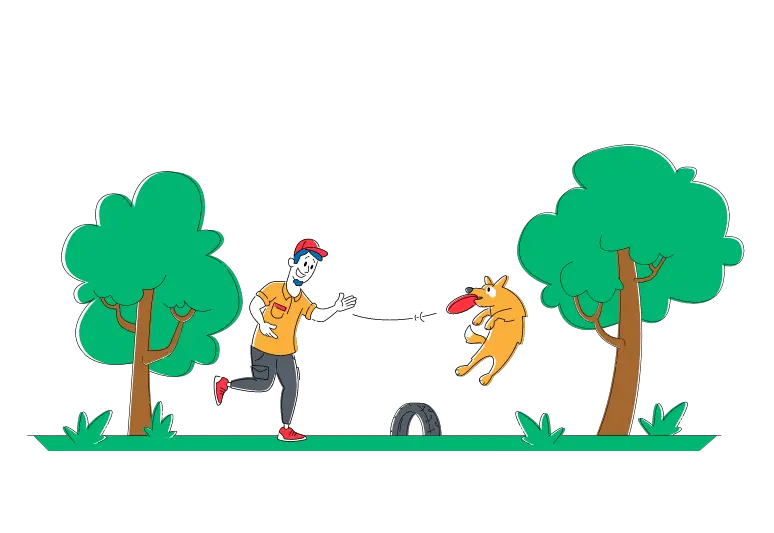
Dogs love pleasing us, although, at times, they can get confused about what we may like or dislike. If your dog shows any signs of disobedience, then use training methods that are proven to work.
If you’ve come this far, if you’re still looking for a great way on how to train a disobedient dog, then you might as well check out Brain training for Dogs, a complete dog training course that will cover everything you need to know to train your disobedient dog successfully.
We acknowledge the time and energy that you spent reading this piece of information for the sake of your fur-baby.
Feel free to contact me in case of further queries or feedback.
Have a great Day!


